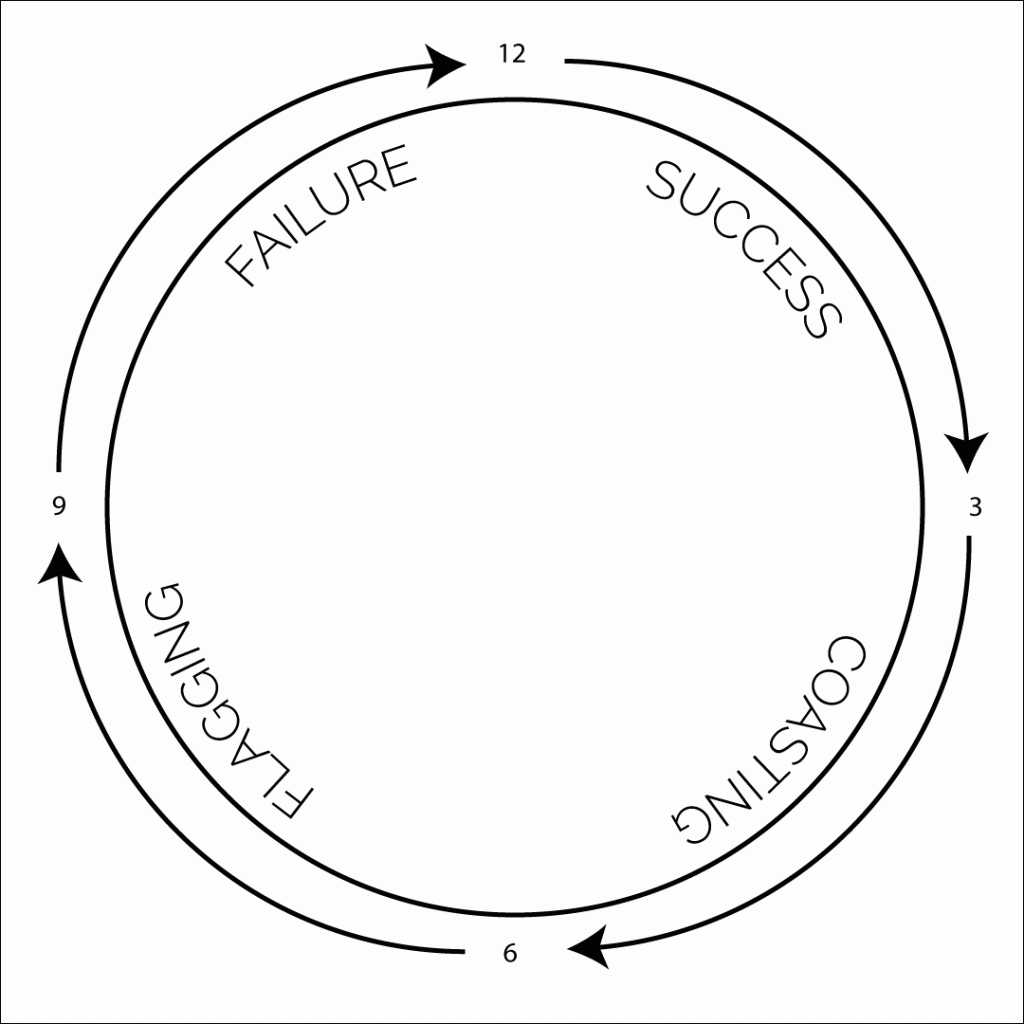
Building Recovery – Cost
Now we are going to get into more detail about the idea of ‘cost’. Another one of the ‘big three’ things to consider when building your recovery along with ‘design’ and ‘location’. Most of us get the general idea that things cost and that we have to pay, but what exactly is the cost of your recovery? If we do not know the cost then we cannot know if we are willing to pay it. So it’s not surprising that this is one of the biggest blocks to recovery. Let’s take a closer look at how much this new home is going to cost.
Always remember when doing any of these exercises that the more you imagine your recovery home as a real home, the better it will work for you as a genuine aid. So ask the same questions you would ask when considering a new home. These are exactly the same questions you need to ask about your recovery. So think of cost as things you will have to give and things you will have to give up. Probably the first thing you would think of when considering moving would be cost. What can you afford? What would you be willing to pay? It’s exactly the same with your recovery.
Don’t assume that you will be willing to pay
The first thing you need to do is tackle the assumption that you will pay anything. Those of you who have tried to recover in the past will know that this is a dangerous assumption to make. A typical idea here is that your addicted life has been all bad. That there was nothing good about it. Not true. Don’t fall into the trap of the ‘medical model’ that removes any choices and says that you were powerless over everything.
Considering yourself as the manager of your own life is an empowering shift in your thinking. You were making choices and remember, it worked for a while. If what you were doing was still working you would still be doing it! But it stopped working and so you need to seriously consider the cost of your recovery. Here is a shortlist of things that you will need to pay.
The disapproval of others
Not everyone is going to like how you change and what you do. Loss of their approval includes the idea of doing things that are hard that only you can see. If you have been big on ‘approval’ this can be a huge cost. Make up your mind to stick to your design.
Acceptance of limitations
You can’t spend money twice! If you are going to pay for your recovery then the money has gone. If you decide that spending more time with the kids is part of your recovered lifestyle then that time is spent and cannot be spent elsewhere. Make up your mind to value the money you are spending.
Letting go of quick fixes
Buying your new home is a long term goal. It involves working and paying for something that does not appear immediately. Before some of us can buy our new place we have to save up for a deposit. This means working hard for something we do not even have yet! If you have been a typical addict you will only have been willing to pay for something you get right now! Make up your mind to let go of quick fixes.
Cost is an investment
So the first thing I want you to do is to get your attitude right towards this idea of cost. If you are not used to thinking about paying then you will probably be feeling bad about the idea of how hard this will be. Well, that’s not a bad thing to come to terms with but I want you to think of the cost more as an investment. You are going to get something amazing out of this! I want to now take a look at some of the challenges you face when deciding to pay for your recovery.
You are responsible for the payment
Really this is a boundary question. Most addicted lifestyles include the idea that someone else is going to look after us or pay for what we need. One of the biggest parts of your preparation is understanding that you are responsible for the payment! When you sign for your house you are saying that you will pay. If the payment is not made it is you they will be looking for. Anyone who has been in this position will know that this is a 24/7 difficulty. Don’t sign for something you are not willing to pay for!
Paying is uncomfortable
Over the years of working in this field one of the things that quickly became very obvious is the way that people become very wary of discomfort. As you became more and more dependent on your drug or behaviour you will have developed this aversion to certain discomforts. This behaviour develops into a belief that you are not supposed to feel any discomfort! This is inevitably accompanied by greater and greater dependence on the things that offer quick fixes.
I have seen several people run out of treatment centres at the thought that things may get uncomfortable in the future. This is before they have even come down off the drugs or been detoxed! So strong is the belief that discomfort is to be avoided at all costs. But discomfort is normal and inevitable. All adults face discomfort every day. Remember, if you expect discomfort it’s a lot easier to deal with. Expectations change experiences.
If you are willing to face discomfort as part of your commitment to your recovery you will discover two things that all adults know. That paying for good things is uncomfortable, and that discomfort does not kill you!
The world does not owe you your new home
One of the most damaging beliefs in early recovery is the idea that you have done the world a huge favour by becoming ‘clean’. This one idea can get in the way of your recovery for years. If you are going to build your recovery then you are doing it for yourself. The rest of the world is not going to live in it. Just you. So it is for you to pay the cost. No one is going to pay it for you.
So make sure it is what you want and that you are willing to pay. If you are paying for a new home when actually you do not want it you will resent every penny and, what’s worse, you will expect everybody to be grateful. When others around you stop appreciating all that you are doing for them by paying for this home you will tear it down out of frustration and anger. So the question of cost becomes “do you want this for yourself, or does someone else want it for you”.
You can’t keep the old home
According to the old saying you can’t have your cake and eat it. This is just as true when it comes to your recovery. You can’t live in two homes at the same time. The idea of living a ‘double life’ is part of the idea of deceit and secrecy that forms a big part of the addicted lifestyle. Part of the cost of building your recovery is the realisation that the cost is high. Meaning that it’s going to take all you have. Meaning that you can’t afford to keep the old home going.
In the old home you may have been managing others approval. Making sure that, in appearance at least, they would be happy with what you were doing and saying. Letting go of others approval can be one of the biggest costs.
This connects with the idea of reality over appearances. Not everyone has as big a problem with this as I did, but it’s worth considering how much you have invested in the appearance of something. In the old home how much time did you spend, how much effort did you put into convincing people of something that was not true? Something that was not real? Make your mind up to now build something real, something substantial.
The best materials cost more
This leads us to the idea of building materials. We are not ready to build yet, we are just thinking about it. But it’s time to think about the quality of the materials we are going to use. Some of you may remember the film ‘The Towering Inferno’ which dealt with the idea of buildings that were too high for firefighters effectively fight the fires. You may remember that the whole concept of the film was based on the son of the architect skimping on the quality of the materials used in the construction. This is what caused the fire.
We are now looking at one of the most important aspects of deceit. Saying we will use the best materials but in the end not being willing to pay for them. So what are these materials?
When you build your recovery you are building your character. Your addicted self will have been built largely using appearances. Convincing people that you were this or that kind of person became a substitute for real character. As long as they believed it, it didn’t matter that it was not true. Saying you were fine when you were not. Agreeing with something when in reality you resented it. Believing it was more important that you convinced people of something than whether it was true or not.
Your recovery is built with principles. These principles are real, not appearances. It’s no good saying we are going to be honest. Creating the appearance of honesty when we are not willing to pay the price of honesty doesn’t build anything. Other important materials are humility, discipline and perseverance. You need to build with the best materials you can afford.
Later in the course you will learn more about these principles and how to build with them. For now take some time to think about cost and building something that will stand the test of time.











 I wanted to share some thoughts with you today around the idea of the ‘King Baby’. This idea has evolved a lot in recent years. I believe it is now a really valuable approach and method to have in your tool box whatever stage of recovery or growth you are at. In this article I will take you through the development of this idea and how the latest evidence suggests that we should all be using it.
I wanted to share some thoughts with you today around the idea of the ‘King Baby’. This idea has evolved a lot in recent years. I believe it is now a really valuable approach and method to have in your tool box whatever stage of recovery or growth you are at. In this article I will take you through the development of this idea and how the latest evidence suggests that we should all be using it. Having said that, let’s now move on to the particular theoretical idea of ‘King Baby’. And I want to start by saying where this was maybe not so useful. You see, we all have a baby inside of us, and a toddler etc. They are with us as part of (snapshots if you like) of our psychological development and so we are all affected by childishness and the related difficulties at times. Treatment Centres used this idea to create a shorthand such as ‘your baby’ or ‘your addict’. This was on the right track in that it achieved some ‘separation’ between the adult self and the ‘crazy’ part of us, but it usually did not take things any further and so this ‘King baby’ was just owned as ‘me’ and just how I am. From this perspective it becomes just another way of avoiding responsibility for ourselves.
Having said that, let’s now move on to the particular theoretical idea of ‘King Baby’. And I want to start by saying where this was maybe not so useful. You see, we all have a baby inside of us, and a toddler etc. They are with us as part of (snapshots if you like) of our psychological development and so we are all affected by childishness and the related difficulties at times. Treatment Centres used this idea to create a shorthand such as ‘your baby’ or ‘your addict’. This was on the right track in that it achieved some ‘separation’ between the adult self and the ‘crazy’ part of us, but it usually did not take things any further and so this ‘King baby’ was just owned as ‘me’ and just how I am. From this perspective it becomes just another way of avoiding responsibility for ourselves. How did this idea form and how was it constructed? The ‘inner child’ in this earlier approach was thought of as either;
How did this idea form and how was it constructed? The ‘inner child’ in this earlier approach was thought of as either; Self parenting – Be your own inner Dad or Mum
Self parenting – Be your own inner Dad or Mum
 Addiction in families is an issue as old as addiction itself and this is the first in a series of articles relating to the family. It will offer lots of practical help and things you can do to improve the family health. You could start by downloading my ebook
Addiction in families is an issue as old as addiction itself and this is the first in a series of articles relating to the family. It will offer lots of practical help and things you can do to improve the family health. You could start by downloading my ebook 
 When there is addiction in families they tend to focus on the addict. It is so important for your health as a family that you set your focus as something else! Individually your focus should be your own growth and development as a person. As a family your focus should be to develop harmony and intimacy. You will learn more about each other including your vulnerability and difficulty. Focusing on anything other than your addict tells you how much you have been affected by this issue.
When there is addiction in families they tend to focus on the addict. It is so important for your health as a family that you set your focus as something else! Individually your focus should be your own growth and development as a person. As a family your focus should be to develop harmony and intimacy. You will learn more about each other including your vulnerability and difficulty. Focusing on anything other than your addict tells you how much you have been affected by this issue.